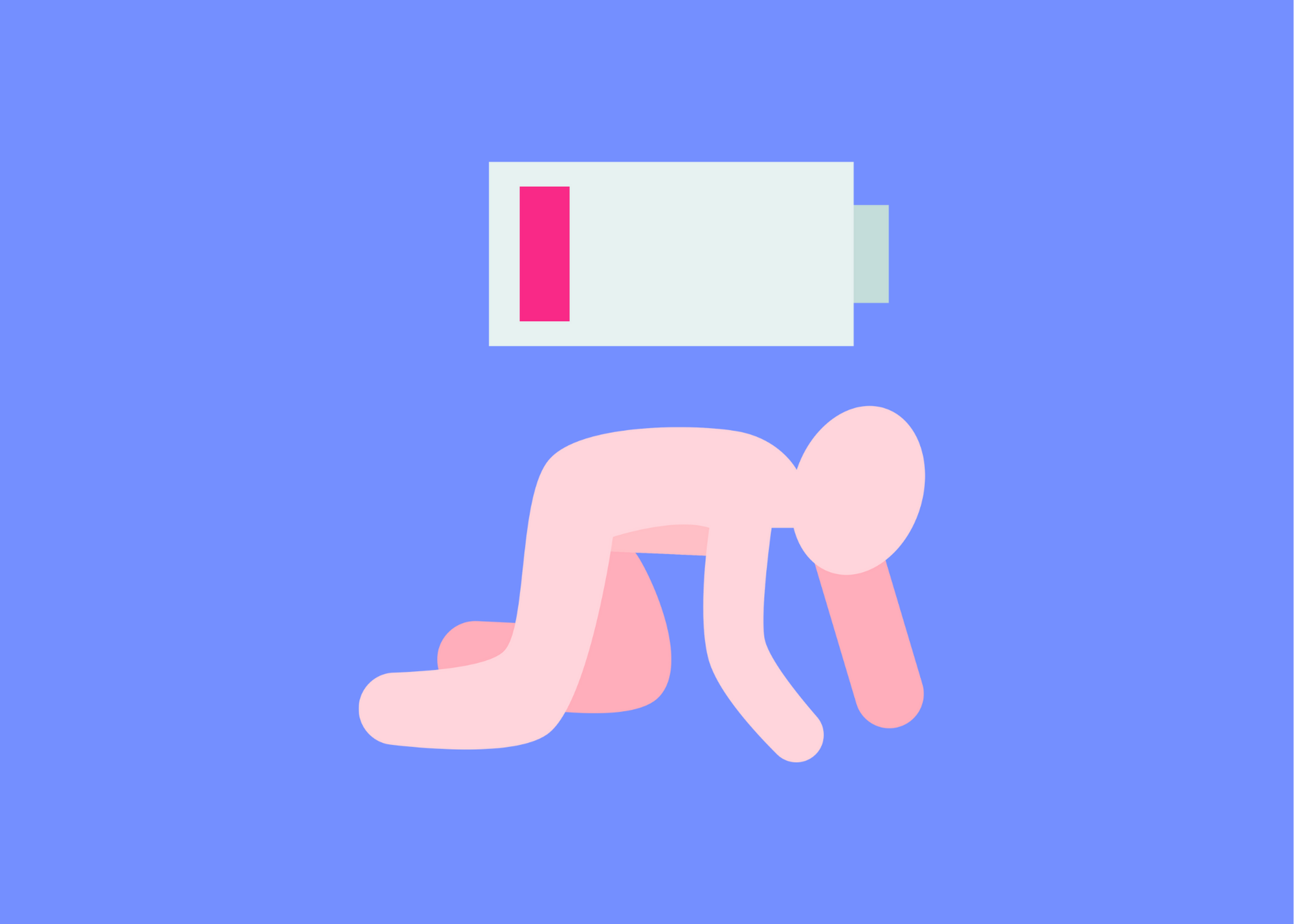How to Improve Your Environment for Mental Health: From Your Personal Space and Beyond
Intentionally curating your surroundings can serve as a powerful stress management tool.
Most people underestimate just how much their surroundings impact their mental health.
The spaces we inhabit—our homes, workplaces, and communities—play a crucial role in shaping our well-being.
The truth? Your environment quietly shapes your focus, mood, and resilience every single day. It’s not a background detail — it’s part of your nervous system’s operating system.
For those navigating chronic stress or burnout, creating a supportive environment can be transformative. A cluttered or chaotic space often contributes to feelings of overwhelm, while an organized, calming setting can promote mental clarity and emotional resilience. Simple changes can significantly reduce stress and create a sense of balance.
Through the lens of Deep Health principles, let’s explore how environmental health influences our mental state and how you can make meaningful changes to enhance your mental well-being. If you’re running on overdrive, your surroundings are either supporting recovery or compounding burnout. There’s no neutral ground.
What is Environmental Health?
Environmental Health refers to the quality and condition of the physical spaces that surround us. It encompasses everything from the cleanliness and organization of your home to the safety and vitality of your community. According to the Deep Health model, environmental health is one of the six essential dimensions of overall well-being, alongside physical, mental, emotional, relational, and existential health.
An optimal environment supports not just our physical health but also our mental and emotional states. Conversely, a cluttered, toxic, or chaotic environment can exacerbate stress, anxiety, and even depression. Therefore, understanding and improving our environmental health is key to your health and wellness.
The Science: Your Space Talks to Your Brain
Environments that bombard you with noise, clutter, artificial light, or constant visual stimulation keep your stress hormones on simmer. Over time, that simmer becomes your baseline.
Research from the National Institutes of Health and the World Health Organization consistently links environmental factors — light exposure, green space, air quality, and noise levels — with mental health outcomes like anxiety, depression, and cognitive fatigue.
Some quick facts:
Natural light exposure regulates circadian rhythm, boosts serotonin, and reduces anxiety symptoms.
Green spaces are associated with lower cortisol levels and improved concentration — even short exposure helps.
Noise pollution increases adrenaline, heart rate, and perceived stress, even if you think you’ve “gotten used to it.”
Clutter increases cognitive load. Your brain literally processes it as unfinished business.
You can’t control everything in your external world, but you can absolutely curate the 10 square feet around you to work in your favor.
What “Environmental Health” Really Means
Environmental health isn’t just about the planet — it’s the quality of your immediate surroundings and how they influence your wellbeing. In the context of mental health and performance, think of it in three layers:
Personal Space (Home):
Your immediate living space—your home, bedroom, workspace, car.
This is the space that most directly regulates your nervous system.
These spaces should be organized, clean, and designed in a way that promotes relaxation and focus.
Community Environment:
Your neighborhood, the people around you, and community as a whole play a significant role in your mental health.
Factors such as safety, social connectedness, access to green spaces (nature), and walkability.
Broader Environment (City/State/Nation):
The larger systems — your city, state, nation, the culture you live and work within.
Also includes the company and company culture you work within.
Conditions such as: pollution levels, economic stability, and public safety can indirectly affect your mental health.
You can’t redesign your city or office culture overnight, but you can optimize what’s within your control — and that’s often enough to shift your stress load dramatically.
How to Complete Your Own Environmental Audit
Step 1: Audit Your Environment Like a Pro
Forget vibes. Think diagnostics.
Run a quick Environmental Health Audit across the spaces where you spend the most time — home, workspace, commute route.
Ask yourself:
Visual: Is it organized or overstimulating? Does clutter dominate your visual field?
Auditory: Is there background noise, constant chatter, or interruptions that spike irritation?
Lighting: Do you get natural light, or are you staring into artificial glare all day?
Air and Temperature: Is your air clean, your space ventilated, and your temperature comfortable?
Emotional tone: How do you feel when you walk in? Calm, neutral, or tense?
You’ll know within seconds which spaces are helping and which are draining you. Don’t overthink it — your body already knows.
Step 2: Clean Up the Friction Points
Small changes compound. And when it comes to stress management, the environment is the ultimate leverage point.
Here’s where to start:
1. Declutter Ruthlessly
Visual clutter = cognitive clutter.
Studies show that people working in organized environments are more focused and less likely to procrastinate.
Start small: one desk, one drawer, one surface. Keep what’s essential; store the rest.
2. Bring Nature In
Indoor plants are more than décor.
They clean the air, reduce physiological stress, and restore attention. Even a single plant can lower your heart rate during stressful tasks.
3. Maximize Natural Light
Move your workspace near a window or use full-spectrum bulbs that mimic daylight. Morning light exposure, in particular, helps regulate cortisol and melatonin — meaning better focus during the day and better sleep at night.
4. Manage Noise
Your nervous system doesn’t distinguish between an argument, traffic, or Slack notifications — noise is noise.
Use noise-canceling headphones, white noise, or calming instrumental music. Schedule “quiet blocks” where possible.
5. Optimize for Calm
Scent, temperature, and texture matter more than you think. Soft fabrics, soothing scents (lavender, sandalwood, citrus), and a comfortable temperature can subtly lower physiological arousal.
Step 3: Level Up — Bigger Shifts for Bigger Impact
Once the basics are in place, it’s time to think strategically.
Rethink Layout
Your environment should make your desired behaviors easy and frictionless.
Want to work out in the morning? Keep your gear visible. Want to meditate? Set up a dedicated corner.
Design the path of least resistance toward what serves you — and maximum resistance toward what doesn’t.
Redesign Your Digital Environment
Your devices are part of your environment.
Mute nonessential notifications, use focus modes, and set visual boundaries on your screen. Cluttered desktops and constant alerts trigger the same stress response as real-world clutter.
Reevaluate Your Commute and Neighborhood
If your daily route feels like a battle, it’s not just inconvenience — it’s a chronic stress exposure.
Look for micro-adjustments: take quieter side streets, walk part of the route, or relocate work sessions to calmer areas when possible.
Advocate for Better Workspaces
Noise, poor lighting, and lack of privacy aren’t “just office quirks” — they’re performance killers.
Leverage the data: employees with access to daylight report 51% fewer eyestrain symptoms and 63% fewer headaches. Use the science to push for healthier environments where you work.
Step 4: Build a “Wellness Perimeter”
Think of it as your environmental boundary — the invisible bubble that helps you regulate stress even when the world outside isn’t calm.
At home: Keep one room tech-free. Use it to decompress, not scroll.
At work: Protect your desk from visual chaos.
On the go: Use tools — sunglasses, playlists, scents — that signal “calm mode.”
You’re essentially training your nervous system to associate specific spaces with recovery. Over time, it becomes automatic.
The Hidden ROI of an Intentional Environment
Optimizing your space isn’t about being aesthetic — it’s about performance and longevity.
A well-designed environment:
Reduces background stress load so your brain can focus on higher-order tasks.
Boosts energy and creativity by lowering cognitive fatigue.
Enhances recovery by giving your nervous system consistent cues of safety and stability.
When your environment works for you, willpower becomes irrelevant. You don’t have to fight yourself to stay on track — your space becomes the system that keeps you aligned.
Step 5: Protect the Upgrades
Once your environment supports you, guard it.
Because if you’ve ever noticed how quickly chaos creeps back in after a stressful week — that’s your cue that maintenance matters as much as setup.
Set a weekly reset ritual. Ten minutes every Friday to tidy, open windows, and restore order.
Check your energy response to each space monthly. If something starts to feel heavy or chaotic, adjust it.
Remember: the goal is not perfection — it’s alignment. Your space should evolve with you.
Bigger Changes for Lasting Impact
For those ready to make more significant changes, here are some ideas that can have a lasting impact on your environmental health:
Redesign Your Living Space: Consider a full-scale decluttering and reorganization of your home. You might even want to redecorate or renovate to create a more peaceful, welcoming space.
Move to a Greener Area: If your current living situation allows, consider relocating to a neighborhood with more green spaces, less pollution, and a stronger sense of community.
Advocate for Community Improvements: Get involved in local initiatives to improve your neighborhood, such as community gardens, clean-up efforts, or noise reduction campaigns.
Invest in High-Quality Furniture: Ergonomic furniture can significantly improve your comfort and reduce physical strain, which in turn benefits your mental health.
Create a Wellness Space: Dedicate a room or area in your home to wellness activities, such as yoga, meditation, workouts, or reading. This space should be free of distractions and filled with items that bring you joy.
Final Thoughts
Your environment is more than just a backdrop to your life—it’s a key player in your mental health.
A silent ally or an invisible stressor. It can reinforce burnout — or it can become one of the most powerful tools for recovery, focus, and emotional stability you have. By taking the time to assess and improve the spaces you inhabit, you can create an environment that supports your well-being and helps you thrive.
Start small.
Reclaim your desk. Add light. Remove noise. Protect your peace.
Because you can’t outthink a space that’s designed to drain you.
And if you ever wonder whether these small tweaks are worth the effort — ask yourself this:
If your surroundings can raise your heart rate, distract your focus, and drain your mood… why wouldn’t you design them to do the opposite? The impact on your mental health will be profound and lasting.
Need Help? You’re not failing. Your environment might just be working against you.
From your fridge to your feed to your friend group—what surrounds you shapes you.
💡 Let’s get strategic about your setup. Book your free 20-minute consult today.
Article References
The sources cited in the article:
National Institutes of Health (NIH). "Mental Health and Environmental Exposures: An Editorial." NIH - Mental Health Environment
American Psychological Association (APA). "Speaking of Psychology: Why Clutter Stresses Us Out." APA - Clutter and Stress
National Institutes of Health (NIH). “ Associations Between Nature Exposures and Health".” NIH - Nature Exposures and Health
Centers for Disease Control and Prevention (CDC). "Social Determinants of Health (SDOH)." CDC - SDOH
Environmental Protection Agency (EPA). "Indoor Air Quality and Its Effects on Health." EPA - Indoor Air Quality






